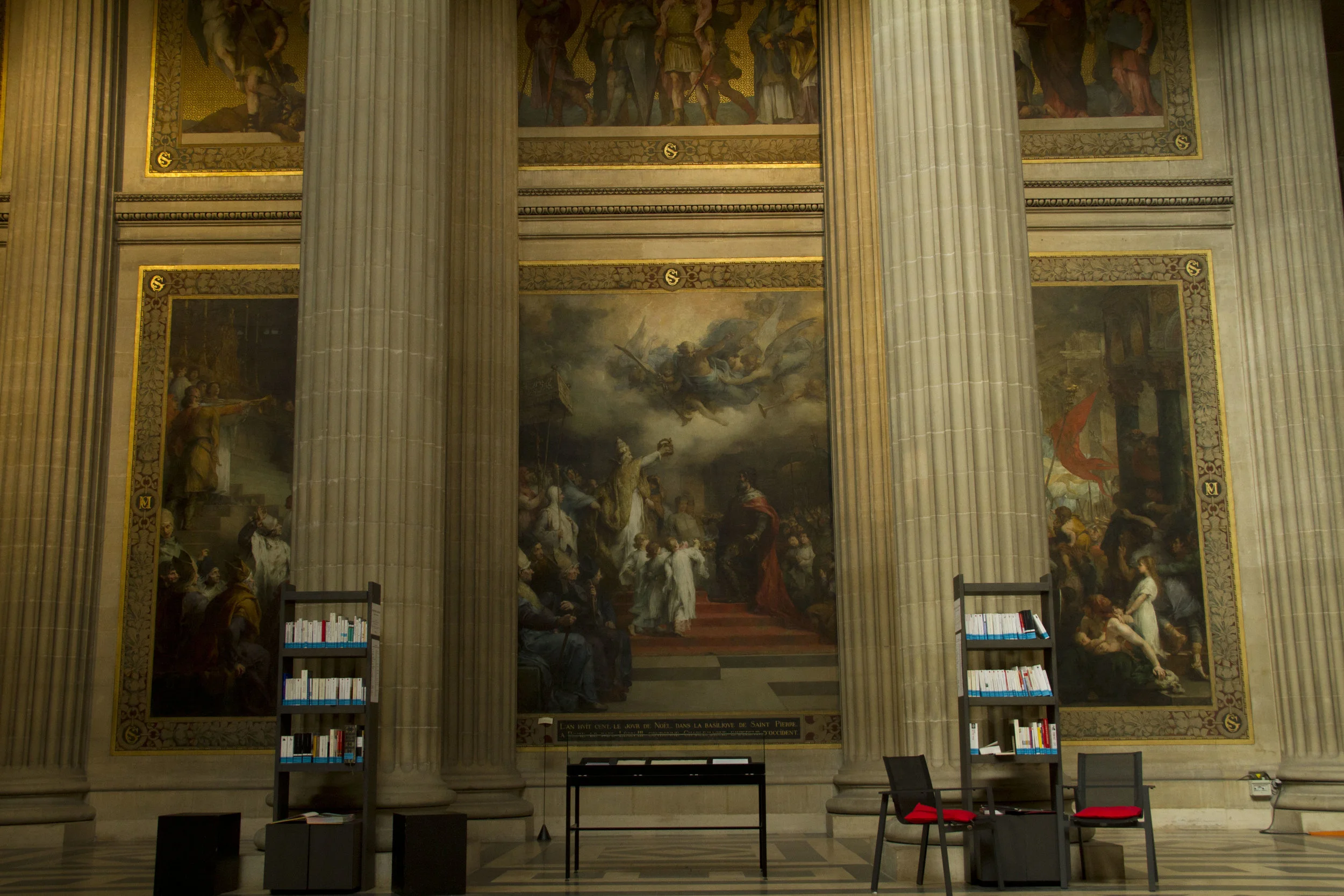Visiting the Pantheon in Paris
A view of the Pantheon as seen from the top of Notre-Dame Cathedral.
UPDATED: 2/4/2023
Note: Some links throughout our site are affiliate links, which means we may receive a small commission at no cost to you.
what is the Pantheon?
First, when most people hear Pantheon, they are generally thinking about the famous Pantheon in Rome. (Not to be confused with the Parthenon in Athens.) But still, we were curious about the Pantheon in Paris and thought it would be worth checking out. A ‘pantheon’ by definition is a group of important people or gods. Paris’ Pantheon is currently a secular, state-run mausoleum that began life as a cathedral and houses the remains of some of the city’s most important historical residents.
The doors to the French Pantheon are massive!
The inscription on the front of the French Pantheon roughly translates as: To the great men, from a grateful homeland (nation)
Everything is decorated and embellished inside the Pantheon.
you might enjoy the Pantheon if…
…you are a lover of Neoclassical architecture, statues and artwork, and appreciate Parisian intelligentsia - from writers to scientists - who form parts of the so-called Western canon.
basics for your visit to the parthenon
An hour should be ample time to generally explore the main floor and crypt. For visitors who want to explore every nook and cranny, you could certainly spend more time there, but for us an hour was not rushed and allowed us the right amount of exploration.
Our visit was mid-morning in April and was not crowded. I suspect that among the plethora of Parisian famous tourist spots, the Pantheon is not high on most peoples’ list. This is a great spot to visit if you have more than a short trip planned to Paris or have been to the city before. We were pleasantly surprised by what we found within this rotunda-adorned building and are glad we went.
fun surprises at the pantheon
My book nerd self was tickled to discover a miniature library, complete with a few standing shelves coupled with seats in which to read the tomes of those entombed in the crypt (‘encrypted’ anyone?).
As an American, I’m used to seeing Neoclassical buildings such as this used as government buildings, so I was pleasantly surprised to find magnificent sculptures, states, and frescoes bringing the building’s interior to life artistically.
What a gorgeous setting to relax and read a few books.
the layout of the pantheon
Entering the building, you will find yourself on the main level with all of the adornment mentioned above. After fully exploring all it has to offer, make your way to the back of the building. There, you will find stairs tucked away that descend to the crypt below. The crypt is a very cool space - both architecturally and in temperature. The first section included the burial spots of people such as Voltaire, who has his own tall statue to accompany it. There is an interesting story that you can read about in this Atlas Obscura article but suffice it to say that neither Voltaire’s brain nor heart are entombed here with him. His heart can be visited in the National Library in Paris.
After this first room was a bit of an underground rotunda from which different passageways veered off. Within each were a few hallways that had small burial rooms that could house several people of national notoriety. Some of the most famous people buried here are Rousseau, Hugo, Zola, Descartes, Braille, Dumas, Saint-Exupéry, Pierre Curie, and his wife and the first woman to be buried here, Marie Curie. The crypt is still used to this day with recent burials in 2018. From what we could tell, there is a lot of room left, so aspiring young French thinkers and writers, one of these spots could be yours someday!
Lindsey stands under the dome and contemplates how miniaturized she feels in this building.
Inside the dome of the Pantheon.
Don’t forget to check out the details on the floor.
Is it bad that this reminds me of Zelda? …game reference, sorry!
Voltaire is one of several people who have an extra special monument marking their life.
In addition to visiting the graves of many prominent French figures you can read about the restoration and general upkeep of the Pantheon.
Click below to save this post to Pinterest!
Check out our other posts about France:
You’ve just scratched the surface!
Check out our 7-day adventure in Paris.












